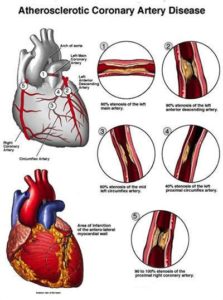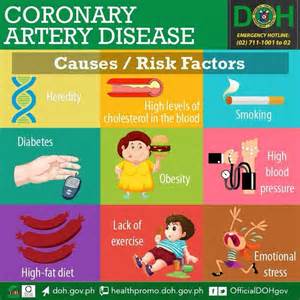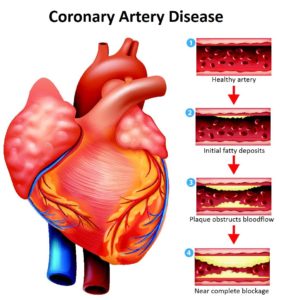The Electrical Safety Foundation states:

1. Inspect electrical decorations for damage before use.
Cracked or damaged sockets, loose or bare wires, and loose connections may cause a serious shock or start a fire.
2. Do not overload electrical outlets.
Overloaded electrical outlets and faulty wires are a common cause of holiday fires. Avoid overloading outlets and plug only one high-wattage into each outlet at a time.
3. Never connect more than three strings of incandescent lights.
More than three strands may not only blow a fuse, but can also cause a fire.
4. Keep trees fresh by watering daily.
Dry trees are a serious fire hazard.
5. Use battery-operated candles.
Candles start almost half of home decoration fires (NFPA).
6. Keep combustibles at least three feet from heat sources.
A heat sources that was too close to the decoration was a factor in half of home fires that began with decorations (NFPA).
7. Protect cords from damage.
To avoid shock or fire hazards, cords should never be pinched by furniture, forced into small spaces such as doors and windows, placed under rugs, located near heat sources, or attached by nails or staples.
8. Check decorations for certification label.
Decorations not bearing a label from an independent testing laboratory such as Underwriters Laboratories (UL), Canadian Standards Association (CSA), or Intertek (ETL) have not been tested for safety and could be hazardous.
9. Stay in the kitchen when something is cooking.
Unattended cooking equipment is the leading cause of home cooking fires (NFPA).
10. Turn off, unplug, and extinguish all decorations when going to sleep or leaving the house.
Unattended candles are the cause of one in five home candle fires. Half of home fire deaths occur between the hours of 11pm and 7am (NFPA).
Stay safe on the roads over the holidays and every day:
- Prepare your car for winter and keep an emergency preparedness kit with you
- Get a good night’s sleep before departing and avoid drowsy driving
- Leave early, planning ahead for heavy traffic
- Make sure every person in the vehicle is properly buckled up no matter how long or short the distance traveled
- Put that cell phone away; many distractions occur while driving, but cell phones are the main culprit
- Practice defensive driving
- Designate a sober driver to ensure guests make it home safely after a holiday party; alcohol or over-the-counter, prescription and illegal drugs can cause impairment



